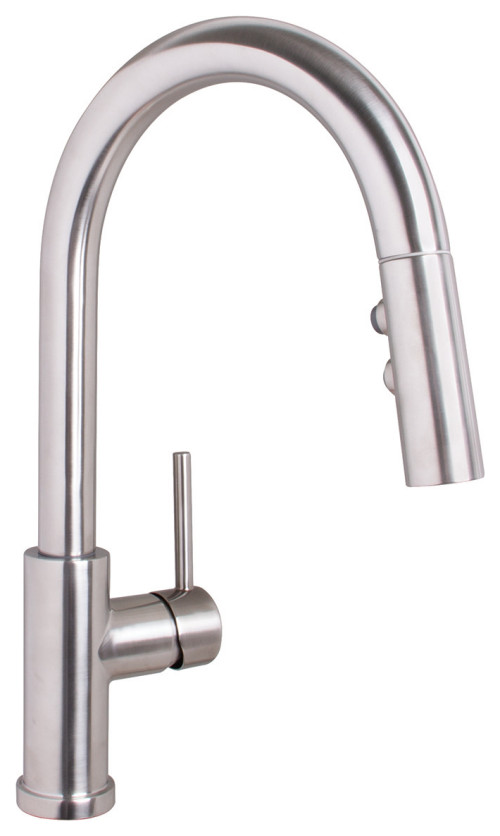The hardest part of replacing a kitchen faucet is removing the old one. Removing the faucet is a fairly simple task that takes about a half hour to complete. You don’t need to make any changes to your plumbing, only removal of the faucet fixture, which is held in place on your sink by locking nuts.

Tools Needed:
– Flathead screwdriver; Philips screwdriver; adjustable wrench; channel lock pliers
– Silicone plumber’s grease; rag
Steps:
1. Turn Off the Water:
Take a look under the sink and close both hot and cold water lines running to the faucet under the sink. Turn both clockwise to shut them off.
Before you start disassembling things, make sure you plug the drains. You never know what little parts are going to fall into the sink, or worse, the garbage disposal.
2. Gain Access:
If you have garbage disposer you need to disconnect it. Unplug the garbage disposer, or shut off the circuit breaker in the main service panel if the disposer is directly wired. Release the disposer by tapping the retaining ring with a hammer in a counterclockwise direction. Use a paint can to support the disposer and collect the water drops. Most likely, the main obstacles will be the pipes and P-traps that drain the sinks. Don’t be afraid to pull them out, but more important; don’t be afraid to replace them with new ones.
3. Remove the Drain Lines:
Most faucets are held in place by “clamping” themselves to the counter top with a larger metal or plastic nut that goes over the faucet threads coming down through the counter top. Loosen the two lock-nuts directly underneath the faucet with a basin wrench by turning the lock-nuts counterclockwise. Remove the lock-nuts around the handle bases and the spout in this manner.
Sometimes, in spite of all your best efforts, it’s simply impossible to loosen the old faucet nuts. Try soaking the threads with penetrating oil and try again.
Lift out the faucet when all nuts have been removed.
4. Remove the Old Faucet:
With the nuts removed the faucet is ready to be removed by lifting up on it. Lift the entire faucet off the sink. If your faucet had a sprayer, unscrew the spray hose from the faucet by turning the connector counterclockwise with a regular wrench. Detach the hose and set the old faucet aside.
5. Prepare the Surface for the new Faucet:
A clean surface is necessary to install the new faucet. For achieve that, scrap away all dried plumber’s putty.
6. Replace the New Faucet:
Follow the manufacturer’s directions to mount the new faucet, than remount the sink (with the new faucet). But basically, roll out a length of plumber’s putty by hand to fit around the entire edge of the faucet base area and then place the new faucet base gasket, a plastic piece shaped like the base of the faucet, on top. Firmly press it into the putty.
7. Make the New Connections:
Hook up the water lines. Connect the hoses to the base of the faucet by threading the locknuts onto the base and tightening them with the basin wrench. Then connect the hoses to the two water pipes, or supply lines, by tightening the connectors.
Refresh the Look of Your Kitchen with These Design Trends (howtobuildahouseblog.com)


